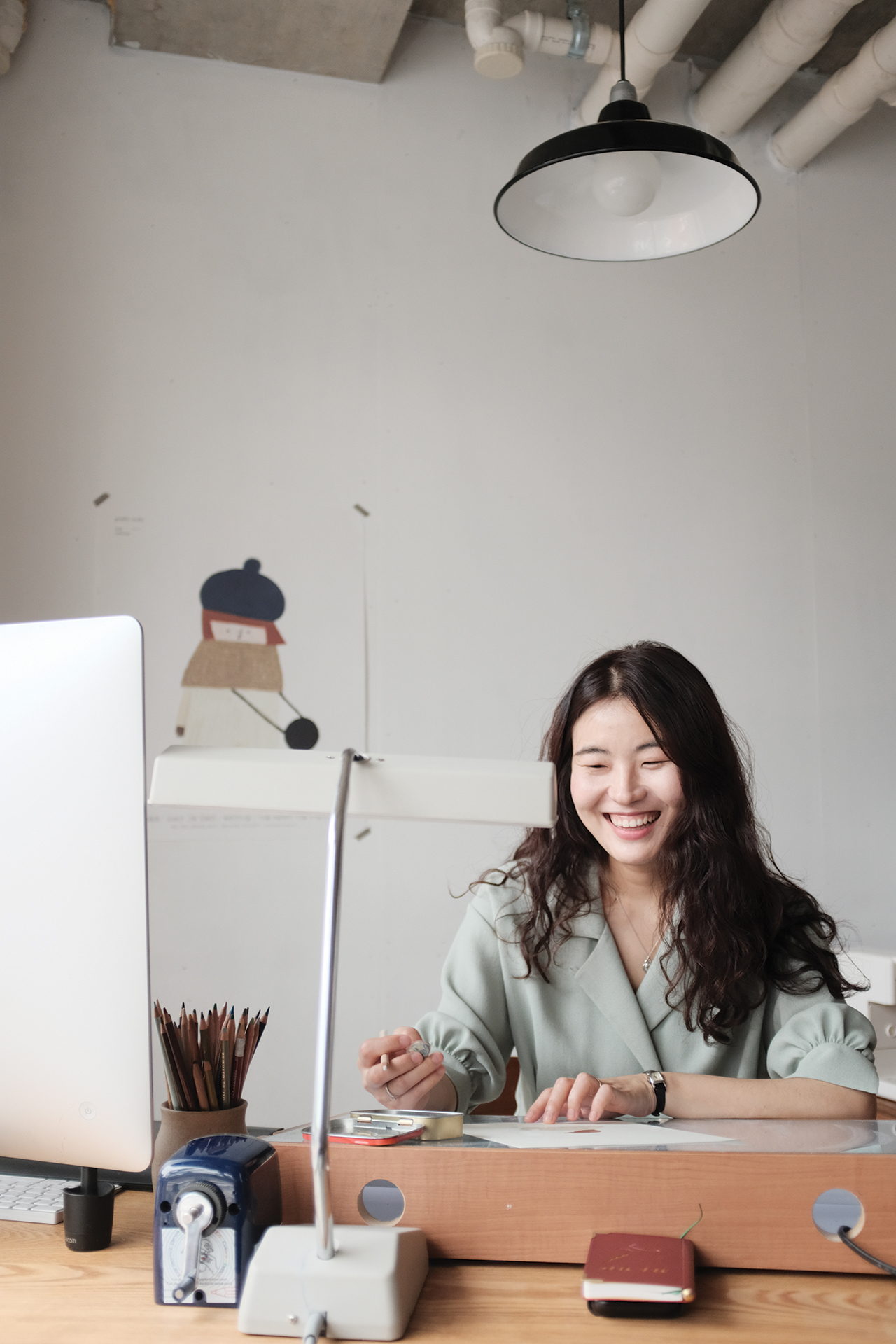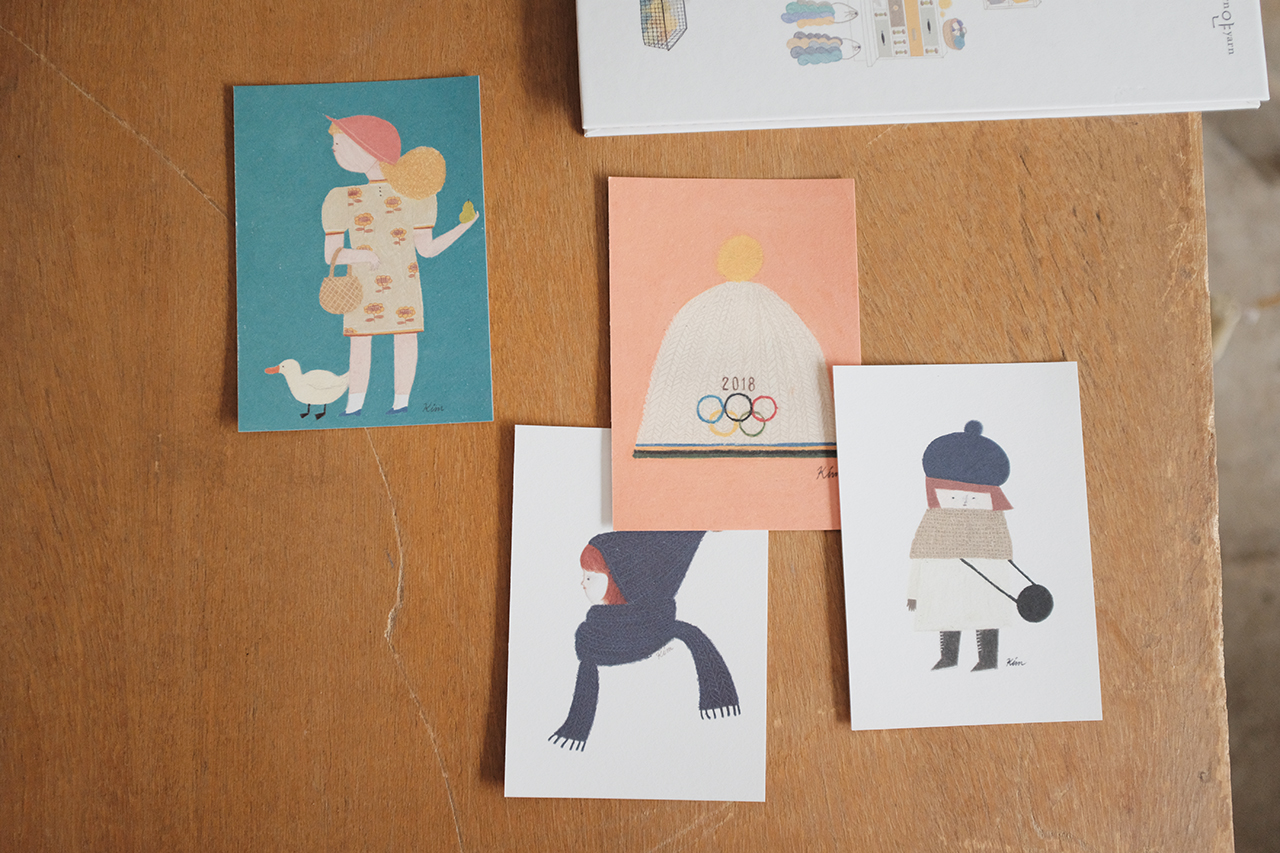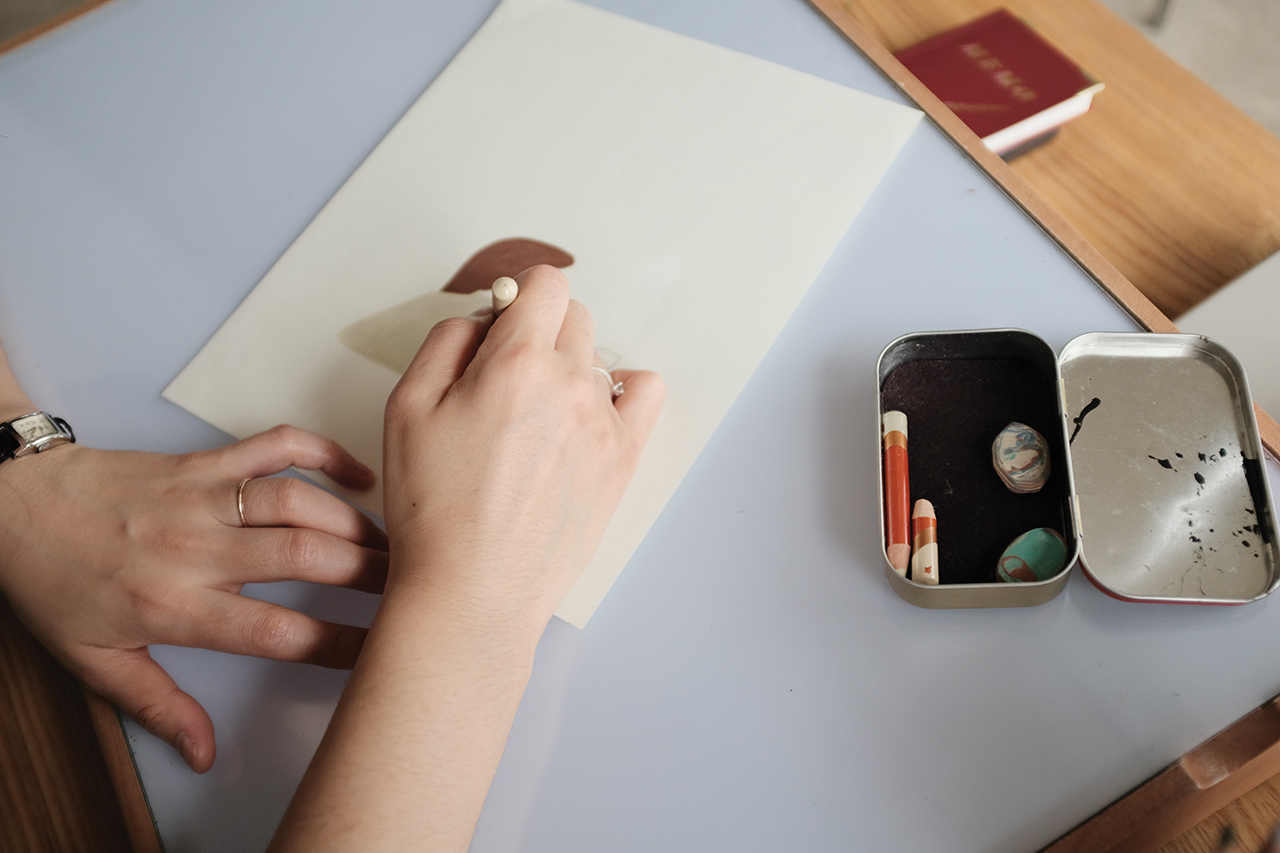It took some sacrifices, but popular illustrator and author Seungyoun Kim made it all come together
From the first glance, Seungyoun Kim’s artwork strikes you with familiarity. It’s not just that she is the hand behind package illustrations for brands such as The Face Shop, CJ Minewater water bottles and Primera. It’s that her art reminds you of your own childhood. Not a children’s book illustrator and not a commercial artist, Kim pens and draws picture books out of her graphic studio, Textcontext, in Mangwon-dong where she starts her day with coffee and scrolling through the internet. Among vintage china and color pencils, Kim talks to SEOUL Magazine about being one of the first independent publishers in Korea, her happiest moments as an author and her hobby of attending political protests.
Writing over drawing
Kim can’t say she had a particular attraction to art when she was young. In second grade, she had an “art tutor” for two months. “My mom had given an art student in my neighborhood a used refrigerator, and in exchange, I’d go to his studio for assignments like drawing Mickey Mouse,” she says with a laugh. “If given the choice between art contests or writing competitions, I’d enter a writing competitions.”
Her books started with the desire to tell a story. “When I was younger, there were no books for children,” she says. “I would read adult books and since I couldn’t understand everything, I’d skip through for the racy moments or look at the pictures. I later found there was a major discrepancy between what I thought the book was about and what it was really about. Maybe this process of making up stories ultimately helped me become an author.”
First forays into art
Despite her initial lack of interest in the arts, Kim began to pursue art academically during her junior year of high school. “When I began looking into colleges, I realized there few options to pursue writing and few career options,” she explains. Around that time, she noticed that some of her classmates were exempt from the afterschool study sessions: “They told me that they were going to art academy and that allowed them to skip those sessions.” Kim explains that she hated school, so she preferred those art classes. She moved forward with art in spite of feeling behind and disliking the rigor of the classes themselves. Although she was accepted to Hongik University, one of Korea’s top art schools, she insists she “wasn’t good at drawing.”
No crew needed
“Even after I got into college, I wondered if I made the right decision,” Kim says. She majored in design because at the time, people didn’t have a clear idea of what design was. She says, “We thought design meant illustrations, film, fashion, typography…”
She believed that design would still allow her to express herself and help her discover her true calling. “While I was a student, I did things like attend meetings for making films and making comics, and I interned at Cheil to make a commercial. I never thought I would draw,” Kim says. “While graduating, I came to the conclusion I was interested in storytelling and narratives. Later, I realized making picture books would allow me to do that alone — without, say, a film crew.”
Not destined to design
After graduating in 2007, Kim got a job at Ahn Graphics where she stayed for about a year and a half. “I wasn’t very good at design,” Kim chuckles. “Design requires you to be extremely meticulous. I didn’t want to do that — I wanted to make new content.” Meanwhile, Kim began to look into picture books and seek inspiration. She began to buy foreign picture books — there weren’t too many Korean titles back then — and fell in love with Guillermo del Toro’s films, especially “Pan’s Labyrinth.” “Previously, I had thought of picture books as simply cute and childlike but I began to rethink their potential. ‘Pan’s Labyrinth’ really touched me and made me re-evaluate what kind of content I wanted to put in my books.”
First generation independent publishing
Kim freelanced for a year or so, debating whether or not she should go back into graphic design. Finding time to work on her personal projects was a challenge. “Between living life and freelancing, I kept putting off finishing my book.” A friend of hers told her about a government grant provided at the time, one that helped young people pursue their dreams abroad. Her idea to start an independent publisher was approved and she was able to work on her book for a few months. “There were a few indie musicians, but the concept of independent publishing really didn’t exist here,” she explains. “My idea was to publish a book at my own studio and sell rights to the book at the Frankfurt Book Fair. I was really a first-generation indie publisher here.”
‘Fox Hat’
Kim says her first book, “Fox Hat,” published in 2009, was about mother and daughter relationships. She was able to take the book with her, not only to Frankfurt, but across Europe. “The response to my book at fairs abroad was overwhelmingly positive,” Kim says, her excitement still evident. “If I think about it now, it was just beginner’s luck but I began to think, ‘Oh, this is easy!’”
Upon returning to Korea, news of her success spread and even her promotional posters for the book were sought after by Gangnam moms interested in interior design. Although it wasn’t sold at major bookstores and couldn’t be easily found online, “Fox Hat” sold over a thousand copies.
Happy moments
“While I was writing ‘Fox Hat,’ I had a small studio in Donggyo-dong and when I got an order to a nearby residence, I was so excited that I would deliver the book myself,” says Kim. She counts this period in her career as her happiest. “After everyone telling me I couldn’t make it, I finally felt like I had!”
During the next ten years, Kim has continued to work on picture books, producing titles like “Yarn Yarn” in 2011 and “The Opening” in 2016. If she had to pick, “The Opening” would be her personal favorite: “If ‘Fox Hat’ carries the sentiments of my mother, ‘The Opening’ carries the sentiments of my father who passed away when I was younger. Since I don’t have too many memories of him, I really wanted to include the ones I had. In the end, those memories didn’t make it into the book and somehow it was about his memory — not his presence.”
Protests and sacrifices
Kim says she is inspired by her personal life as well as by people and politics: “I went to the Park Geun-hye protests more than ten times,” she says. “It’s not just my political preference but also something about seeing the spirit of the people. After feeling like I dislike Seoulites, I’ll feel there’s something that connect us at a protest.”
To keep ideas fresh, Kim says you need constant self-analysis. “If you’re happy for too long or too busy for too long, you lose yourself. Every few years, you need to reevaluate what you do.”
She says that her projects can pile up and the deadlines can be stressful. “I found that for me, I was doing too many things I didn’t want to do in order to pursue what I wanted to do. I have made sacrifices like not having a car, not buying a house and putting off having a baby.”
Looking forward
Kim hopes that even those who cannot read Korean will be touched by the artwork in her books. “The text really only takes five minutes to read, but if the reader can feel something in the images, I like that too,” she says.
Down the line, Kim says she would like still like to make films one day and create a series of picture books. She has ambitions but seems content where she is. “These days, I think about how all the small details fell into place. I have the dog I always wanted, I have the cat I always wanted, I share a studio with my husband.” She smiles. “I don’t go to church but I think about how the Israelites wandered through the desert for forty years. I think if I got everything in one stroke, I never would have realized how precious all the small things are.”
Written by Hahna Yoon
Photographed by Robert Koehler





